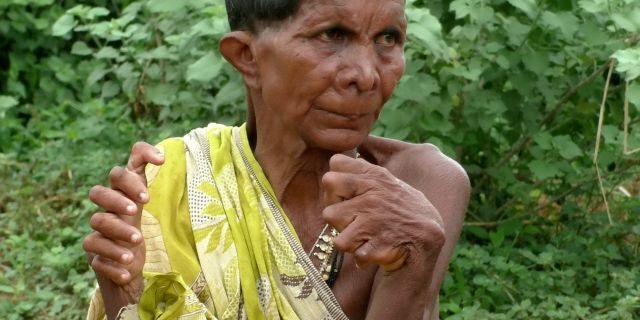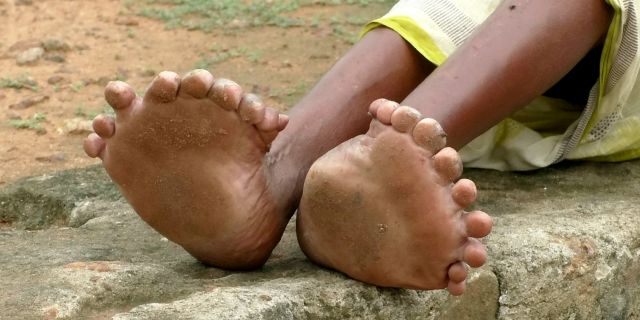[ad_1]
A woman in India who was born with 10 extra toes and 12 fingers said her neighbors “believe that I am a witch” due to the abnormality, but that she can’t afford treatment.
“I was born with this defect and I couldn’t be treated as we belonged to a poor family,” Kumar Nayak, of Odisha, told SWNS. “It’s been 63 years [since] I have been in the condition I am today. The residents nearby believe that I am a witch and keep away from me. But sometimes more visitors come to see my condition.”

Kumar Nayak, 63, from the Ganjam district in Odisha, India, said her family was too poor to seek treatment.
(SWNS)
Nayak said that the condition has forced her to stay indoors, similar to how a man in China was living his life due to an extra four toes on one foot. The 21-year-old Chinese said that, in his case, his parents believed the extra digits were “lucky,” and that they were superstitious so they “didn’t deal with it.”
GERMAN SHEPARD PUPPY STUCK IN ‘PERPETUAL PUPPYHOOD’ DUE TO RARE GENETIC CONDITION
While that 21-year-old eventually had his extra toes removed, for Nayak the future remains uncertain.

As a result, for 63 years she’s been afraid to go out in public because neighbors believe she is a witch.
(SWNS)
“I know that she has a medical problem and it has nothing to do with what others believe her to be,” a neighbor of Nayak’s told SWNS. “I feel so sorry for her that she cannot even afford to get herself treatment.”
CLICK HERE TO GET THE FOX NEWS APP
Having an extra finger or toe is called polydactyly, with the extra digits ranging from a small raised bump to a complete formed finger or toe, according to Seattle Children’s. There are three different types of polydactyly, depending on where the extra digits are located. Typically children with the condition are treated in early childhood, with surgery depending on how the extra digit is connected to the hand or foot.
[ad_2]
Source link

